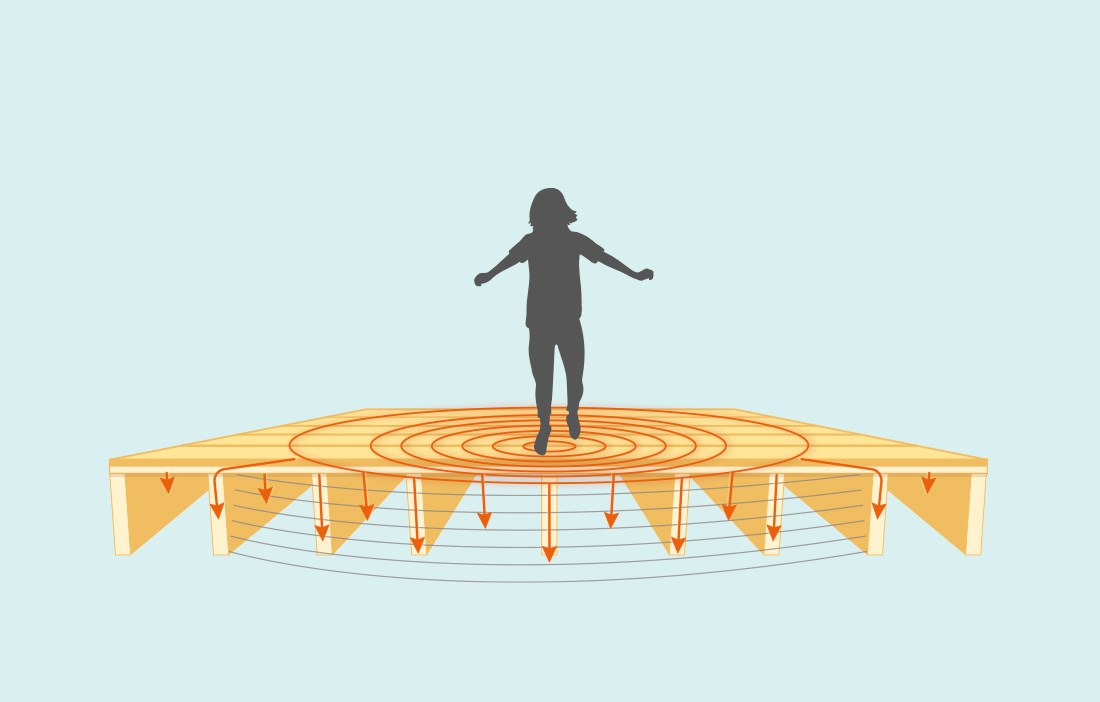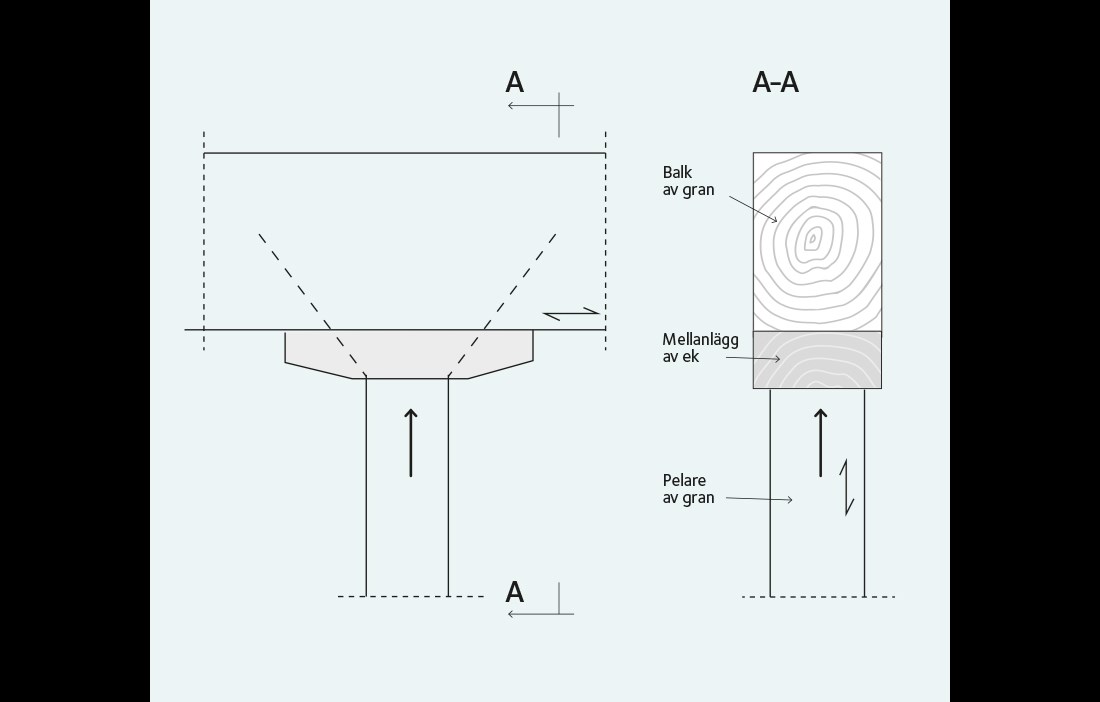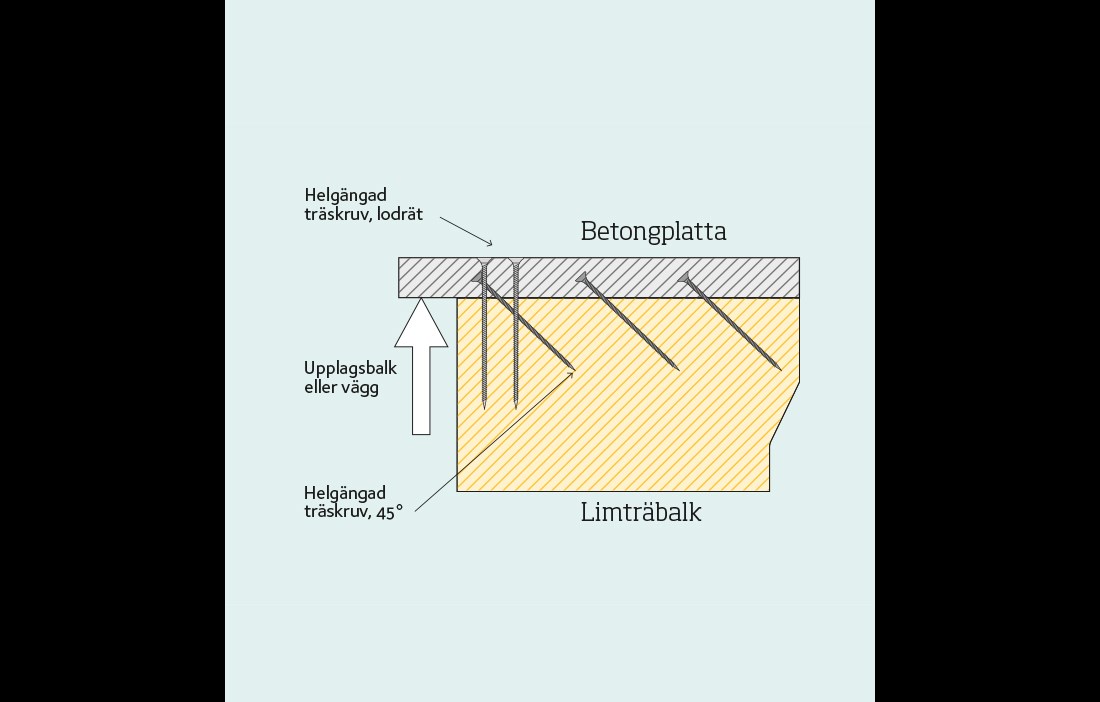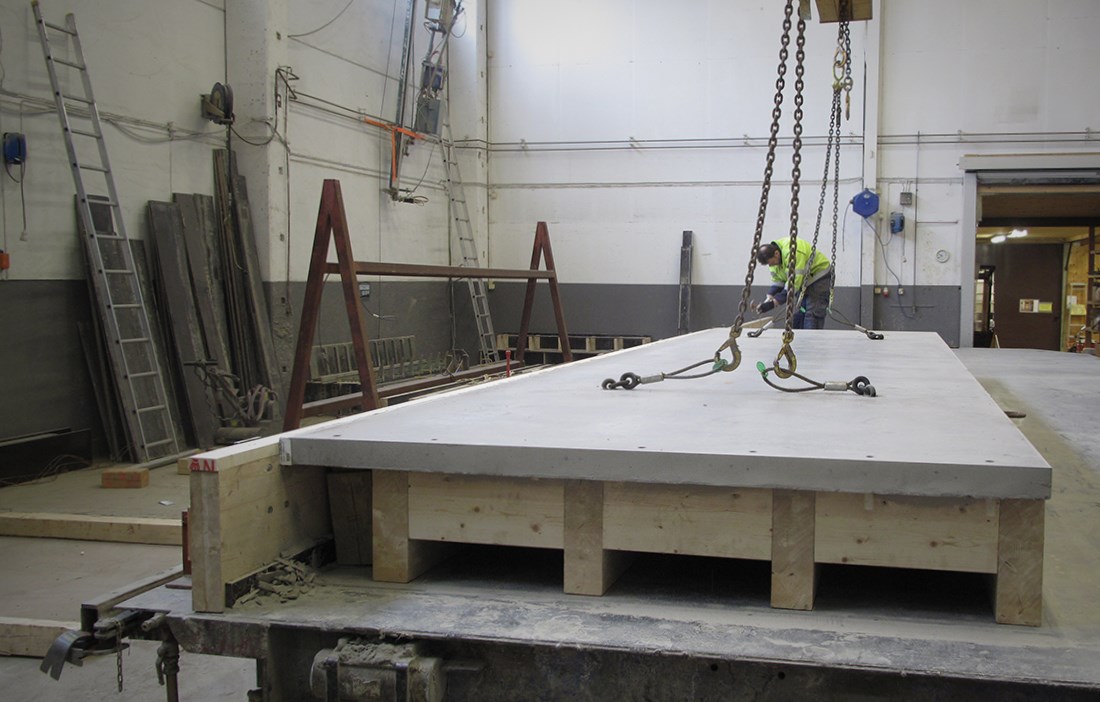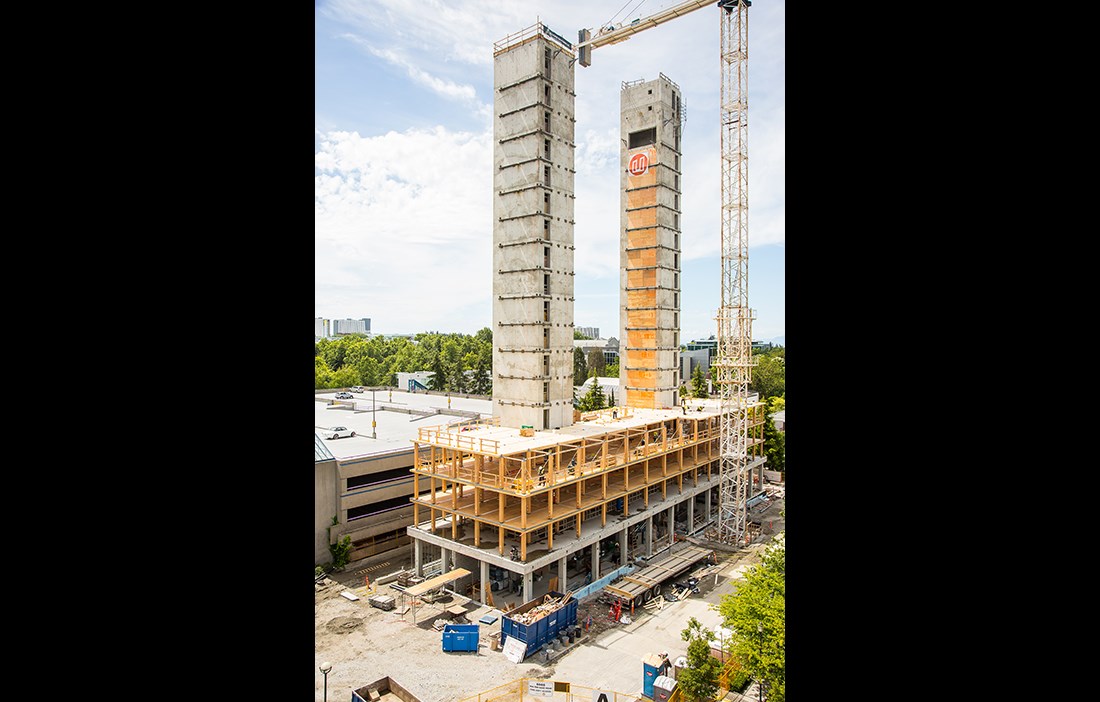Generally speaking, a hybrid is something of mixed origin, such as a merging of different materials that combines the benefits of the constituent parts. Regular construction products in softwood can be combined either with other wood materials or inorganic materials to achieve a better solution. The focus is on producing suitable products in the categories:
• Materials, e.g. engineered wood products (EWP).
• Components, e.g. composite floor structures in wood and concrete.
• Systems, e.g. multi-storey structural frames in wood, with stabilising elements of steel or concrete.
It is unlikely that wood will be the only construction material in the future. However, smart wood-based hybrid solutions could lead to wood being used in a more rational way, promoting the development of more efficient buildings. In the long run, this would result in a higher proportion of wood in buildings, which would be beneficial for living conditions, the climate and for society at large.
Background – Craftsmen, engineers and architects have always combined different materials, usually to exploit their best attributes. This has enabled the creation of an end product with better properties than its constituent materials. Examples of early wood-based hybrids include some of the wooden structures built in the Alpine region, where carpenters layered blocks of hardwood – usually oak – between beams and posts, which tended to be made from spruce or pine. Since oak is three times stronger than spruce and pine under compression perpendicular to the grain, using a hardwood spacer could dramatically reduce the risk of compression failure.
Wood’s strengths – Wood is an excellent construction material in many respects, while also having significant climate benefits compared with most other building materials. The core climate benefits are that wood is extracted from a renewable resource with little energy use and that photosynthesis captures carbon dioxide as the forest grows. Another positive property of wood relates to compression and tension parallel with the grain. In this case, the material is very strong and stiff in relation to its weight, which paves the way for exciting applications such as roof structures with large spans. Wood is also easy to work on and shape, which allows for both aesthetically pleasing and structurally effective solutions. Wood’s positive effect on people’s well-being is another inherent strength.
Challenges of wood – Wood is a material created by nature and, like other construction materials, requires engineering to optimise the conditions for construction. It is therefore logical that there is room to improve some of wood’s poorer properties as a construction material and thus make it more competitive against other, less climate-friendly, materials.
Inspiration for improvements to wood’s properties could readily be drawn from the development of reinforced concrete, an excellent example of a highly successful hybrid material. The advantage of combining concrete and steel is that you exploit the strengths of the two materials, while curbing their weaknesses. The combination of concrete and steel rebar has prompted a dramatic expansion of the material’s applications: from a few structures in unreinforced concrete, mostly subject to compression forces, that were built before the 1900s, to reinforced concrete, the world’s go-to construction material. The huge success of this material has to a large extent been due to the happy hybridisation of concrete and steel rebar.
When it comes to wood’s weaknesses, one of the shortcomings cited most often is durability, but this problem relates primarily to unprotected structural components outdoors. Structural wood protection, adequate preservative treatment or chemical modification can substantially improve durability. There are, however, some properties of wood that can be more difficult to get around, such as:
a) widely varying strength properties, particularly tensile and bending
b) brittle fractures
c) relatively low mass
d) relatively low modulus of elasticity (elastic modulus)
e) difficult to execute stiff fixings/connections.
In this article, we focus on points c), d) and e) and try to find examples of solutions that use a combination of wood and other materials.
Wood’s low mass and modulus of elasticity (points c and d) have an unfavourable effect on floor structures in high-rise apartment blocks in particular, manly with reference to sagging, vibrations and acoustics. When people walk on a floor, it is set in an oscillating motion. The properties of the oscillation response are most dependent on the floor structure’s mass and lowest fundamental frequency. It is hard to make a heavy floor structure oscillate. A light floor structure, on the other hand, can be set in motion by a person’s movements if it is not designed correctly.
Sagging and vibrations and acoustics-related issues can be reduced by using a hybrid solution, known as a composite floor structure. From a static point of view, this type of structure is highly efficient, as you make optimum use of the materials’ properties, i.e. the compressive strength of the concrete and the tensile strength of the wood. Since the elastic modulus of the concrete is three times greater than that of the wood, the resulting bending stiffness of a composite floor structure is considerably higher than an equivalent wooden floor structure of the same height. More mass in the floor structure also has the beneficial effect of increasing resistance to global overturning, a problem that would otherwise require expensive countermeasures in tall and light buildings.
Another problem related to points d) and e), and to some extent also point c), is the oscillations that can arise from the dynamic effects of wind. Oscillations can cause unpleasant sensations and illness in the building’s users, which can render it unusable for its intended purpose. High-rise wooden buildings have low horizontal stiffness compared with equivalent buildings in steel or concrete. This is due largely to wood’s low elastic modulus and perhaps to an even greater extent on the connections between the various wooden components, which usually have significant give in them. A building’s stiffness and mass are key factors that affect its frequency and acceleration due to wind load.
A rational way to reduce the risk of wind-induced vibrations is, once again, to use a hybrid solution where a wooden structure takes care of the vertical, downward loads (e.g. permanent loads, imposed load and snow load), while an affixed concrete or steel structure with much higher bending stiffness takes care of horizontal and vertical upward wind loads. Construction of the 18-storey Brock Commons building in Vancouver, Canada in 2017 began with two concrete cores cast in situ, which also provided horizontal stabilisation for the entire building. Then the wooden section, comprising glulam posts and CLT floor structures, was assembled around the cores. In addition to adding significant horizontal stiffness, the concrete element of the University of British Columbia’s student accommodation block made assembly of the structural wooden components exceptionally fast, at a rate of two storeys per week. This was mainly because there was no need to temporarily stabilise the structure during construction.
Text Roberto Crocetti

